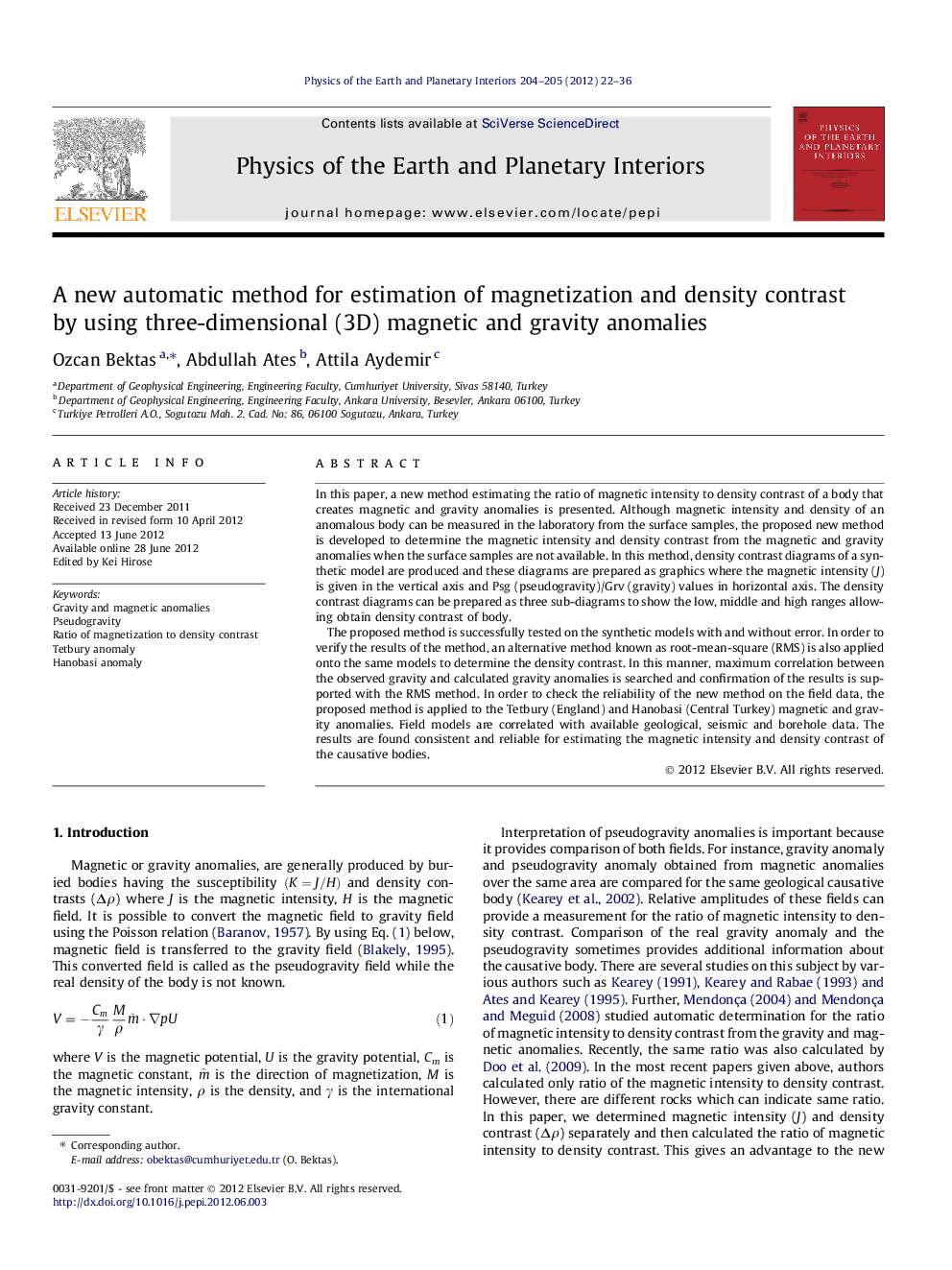| Article ID | Journal | Published Year | Pages | File Type |
|---|---|---|---|---|
| 4741747 | Physics of the Earth and Planetary Interiors | 2012 | 15 Pages |
In this paper, a new method estimating the ratio of magnetic intensity to density contrast of a body that creates magnetic and gravity anomalies is presented. Although magnetic intensity and density of an anomalous body can be measured in the laboratory from the surface samples, the proposed new method is developed to determine the magnetic intensity and density contrast from the magnetic and gravity anomalies when the surface samples are not available. In this method, density contrast diagrams of a synthetic model are produced and these diagrams are prepared as graphics where the magnetic intensity (J) is given in the vertical axis and Psg (pseudogravity)/Grv (gravity) values in horizontal axis. The density contrast diagrams can be prepared as three sub-diagrams to show the low, middle and high ranges allowing obtain density contrast of body.The proposed method is successfully tested on the synthetic models with and without error. In order to verify the results of the method, an alternative method known as root-mean-square (RMS) is also applied onto the same models to determine the density contrast. In this manner, maximum correlation between the observed gravity and calculated gravity anomalies is searched and confirmation of the results is supported with the RMS method. In order to check the reliability of the new method on the field data, the proposed method is applied to the Tetbury (England) and Hanobasi (Central Turkey) magnetic and gravity anomalies. Field models are correlated with available geological, seismic and borehole data. The results are found consistent and reliable for estimating the magnetic intensity and density contrast of the causative bodies.
► A new method is proposed to estimate the magnetic intensity/density contrast ratio. ► This new method can be useful when the surface samples are not available. ► The method allows to study each anomaly separately for different rock types. ► All models are correlated with available geological and geophysical data.
